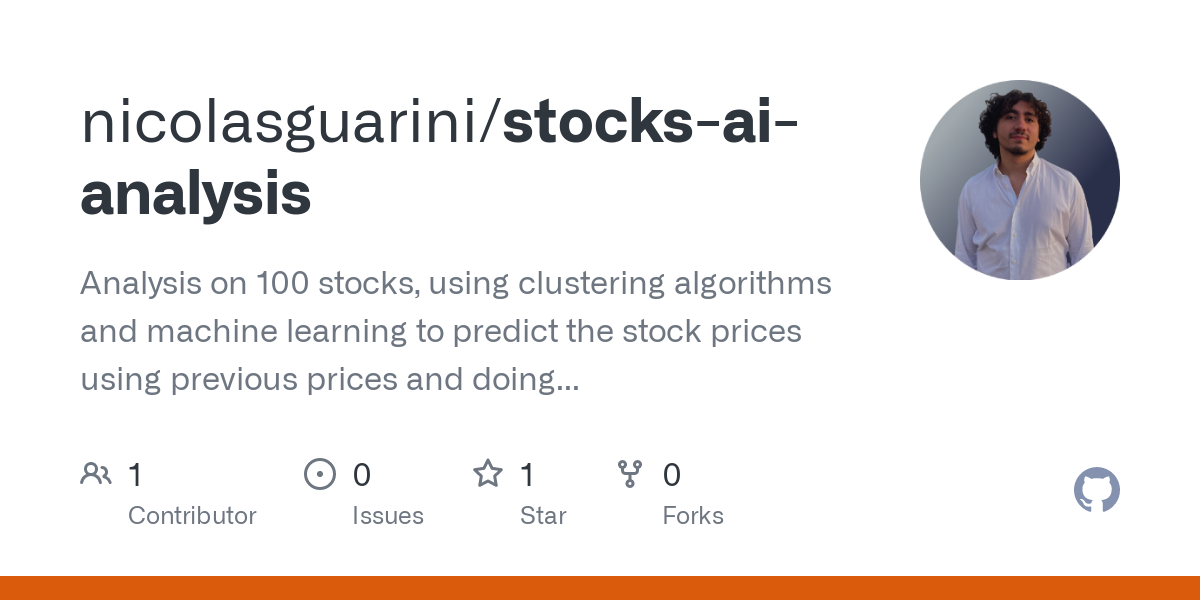20 Best Pieces Of Advice For Choosing Ai Stock Pickers
20 Best Pieces Of Advice For Choosing Ai Stock Pickers
Blog Article
Top 10 Ways For Using Sentiment Analysis For Stock Trading Ai From Penny To copyright
In AI trading in stocks, using sentiment analysis can provide an insightful insight into market behaviour. This is particularly applicable to penny shares and cryptocurrencies. Here are 10 tips to use sentiment analysis to your advantage in these markets.
1. Sentiment Analysis: Understanding its Importance
Tips: Be aware of how sentiment affects short-term changes in price, especially for speculative assets like penny stocks and copyright.
The reason: Public sentiment can frequently be a prelude to price actions. This is an important signal to trade.
2. AI for analysis of different data sources
Tip: Incorporate diverse data sources, including:
News headlines
Social media include Twitter, Reddit and Telegram
Blogs and forums
Press announcements
Why Broad coverage is important: It helps provide a full emotional image.
3. Monitor Social Media in Real Time
Make use of AI tools such as Sentiment.io or LunarCrush to monitor the trends of discussions.
For copyright For copyright: Concentrate your efforts on those who influence you and talk about specific tokens.
For Penny Stocks: Monitor niche forums like r/pennystocks.
What's the reason? Real-time monitoring allows you to make the most of emerging trends.
4. Concentrate on Sentiment Metrics
Attention: pay attention to metrics such as:
Sentiment Score: Aggregates positive vs. negative mentions.
Volume of Mentions Tracks buzzing around an asset.
Emotion analysis: measures excitement, fear or the fear of.
The reason: These indicators provide practical insights into the psychology of markets.
5. Detect Market Turning Points
Tip Use sentiment data to identify extreme positivity (market peaking) or negativity (market bottoms).
Why contrarian strategies are often efficient at extremes of emotion.
6. Combine Sentiment with technical Indicates
Tips Use sentiment analysis in conjunction with traditional indicators such as RSI MACD or Bollinger Bands to confirm.
The reason: An emotional response may be misleading; a technical analysis provides context.
7. Automated Sentiment Data Integration
Tips: Utilize AI trading robots that incorporate sentiment in their algorithm.
Automated response ensures rapid response to changes in market sentiment.
8. Account for Sentiment Manipulation
Beware of false news and pump-and dump schemes, especially in the case of penny stocks and copyright.
How do you use AI tools to identify irregularities, such as sudden spikes in the number of mentions coming from suspect accounts or sources that aren't of high-quality.
How do you recognize manipulation and avoiding fake signals.
9. Backtesting Sentiment Analysis Based Strategies based on
Check your sentiment-driven trades against previous market conditions.
Why? This will ensure your strategy for trading benefits from sentiment analysis.
10. Monitoring the sentiment of major influencers
Make use of AI to monitor the most influential market players, like traders, analysts or copyright developers.
For copyright: Focus on posts and tweets of figures like Elon Musk or well-known blockchain founders.
Watch the comments of the industry's analysts or activists.
Why: Influencers' opinions can have a major influence on market mood.
Bonus Add Sentiment and Fundamental Data with On-Chain Data
Tips Integrate sentiment as well as fundamentals (like earnings) when trading penny stocks. In the case of copyright, you may also utilize on-chain information, like wallet movements.
The reason: Combining different types of data offers a more complete view and helps reduce the need to rely on the sentiment alone.
These tips can be used to effectively leverage sentiment analysis to improve your AI strategies for penny stocks as well as cryptocurrencies. Check out the best this site about free ai trading bot for site info including ai for trading stocks, ai day trading, penny ai stocks, ai stocks to invest in, stock analysis app, ai stock trading app, ai for trading stocks, ai for copyright trading, trading chart ai, ai stock prediction and more. 
Top 10 Tips For Leveraging Ai Stock Pickers, Predictions And Investments
Backtesting is a useful tool that can be used to enhance AI stock strategy, investment strategies, and predictions. Backtesting can provide insight into the effectiveness of an AI-driven strategy in past market conditions. Backtesting is a fantastic tool for stock pickers using AI or investment prediction tools. Here are ten helpful tips to help you get the most benefit from backtesting.
1. Use historical data of high quality
Tip. Make sure you're using accurate and complete historical information, such as the price of stocks, volumes of trading and earnings reports, dividends, or other financial indicators.
What is the reason? Quality data is vital to ensure that the results from backtesting are reliable and reflect current market conditions. Incorrect or incomplete data could produce misleading backtests, affecting the accuracy and reliability of your strategy.
2. Include trading costs and slippage in your Calculations
Backtesting is a fantastic way to create realistic trading costs like transaction fees commissions, slippage, and the impact of market fluctuations.
The reason: Not accounting for the cost of trading and slippage can overstate the potential returns of your AI model. By incorporating these aspects the results of your backtesting will be closer to the real-world situations.
3. Tests for different market conditions
Tip - Backtest your AI Stock Picker in a variety of market conditions. These include bull markets and bear markets, as well as times of high market volatility (e.g. markets corrections, financial crisis).
Why: AI algorithms can behave differently in various market conditions. Testing in various conditions assures that your plan is dependable and adaptable to various market cycles.
4. Utilize Walk Forward Testing
Tips Implement a walk-forward test that tests the model by testing it with the sliding window of historical data and testing its performance against data not included in the sample.
The reason: Walk forward testing is more secure than static backtesting when testing the performance in real-world conditions of AI models.
5. Ensure Proper Overfitting Prevention
Tips: Avoid overfitting your model by testing it with different periods of time and ensuring it doesn't pick up any noise or anomalies in historical data.
Why: When the model is too tightly tailored to historical data, it becomes less reliable in forecasting the future direction of the market. A well-balanced model should generalize to different market conditions.
6. Optimize Parameters During Backtesting
Utilize backtesting to refine important parameters.
The reason: The parameters that are being used can be adapted to enhance the AI model’s performance. However, it's essential to ensure that the optimization does not lead to overfitting, as previously mentioned.
7. Drawdown Analysis and risk management should be a part of the overall risk management
TIP: Include risk management techniques such as stop losses and risk-to-reward ratios reward, and size of the position when back-testing. This will allow you to determine the effectiveness of your strategy when faced with large drawdowns.
Why? Effective risk management is key to long-term success. When you simulate risk management in your AI models, you'll be able to identify potential vulnerabilities. This lets you adjust the strategy and achieve greater results.
8. Analyze key Metrics Beyond Returns
It is essential to concentrate on other key performance metrics that are more than simple returns. This includes the Sharpe Ratio, the maximum drawdown ratio, the win/loss percentage, and volatility.
Why are these metrics important? Because they give you a clearer picture of the returns of your AI's risk adjusted. When focusing solely on the returns, you could miss out on periods of high risk or volatility.
9. Simulate Different Asset Classes and Strategies
Tips for Backtesting the AI Model on Different Asset Classes (e.g. ETFs, Stocks, Cryptocurrencies) and a variety of investment strategies (Momentum investing Mean-Reversion, Value Investment,).
Why is it important to diversify your backtest with different asset classes can help you evaluate the AI's adaptability. It is also possible to ensure it is compatible with multiple types of investment and markets, even high-risk assets, such as copyright.
10. Refresh your backtesting routinely and refine the approach
Tips: Make sure to update your backtesting framework regularly with the most recent market data to ensure it is updated to reflect new AI features and changing market conditions.
The reason: Markets are constantly changing and your backtesting needs to be, too. Regular updates are required to make sure that your AI model and backtest results remain relevant, regardless of the market shifts.
Bonus Monte Carlo simulations may be used for risk assessment
Tips: Monte Carlo simulations can be used to model different outcomes. Perform several simulations using various input scenarios.
The reason: Monte Carlo models help to better understand the potential risk of different outcomes.
Use these guidelines to assess and optimize your AI Stock Picker. Backtesting thoroughly will confirm that your AI-driven investments strategies are robust, adaptable and solid. This allows you to make educated decisions about volatile markets. View the best ai for trading for site advice including ai sports betting, ai stock prediction, ai trading app, ai trading, ai trading, smart stocks ai, ai stock trading bot free, ai trading app, ai investing, best stock analysis app and more.